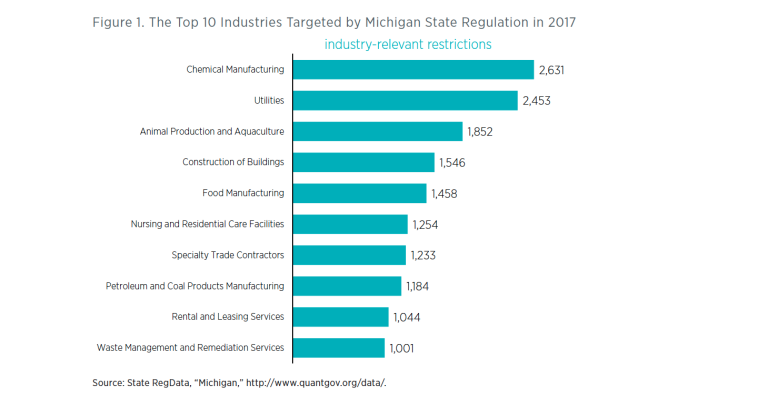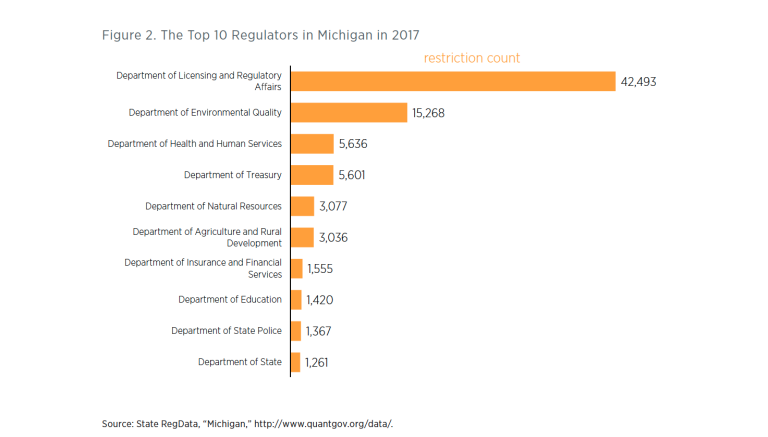- | Regulation Regulation
- | Policy Briefs Policy Briefs
- |
A Snapshot of Michigan Regulation in 2017
83,484 Restrictions, 4.6 Million Words, and 6 Weeks to Read
It would take an ordinary person more than three years to read the entire US Code of Federal Regulations (CFR), which currently contains more than 112 million words. The sheer size of the CFR poses a problem not just for the individuals and businesses that want to stay in compliance with the law, but also for anyone interested in understanding the consequences of this massive system of rules. States also have sizable regulatory codes, which add an additional layer to the enormous body of federal regulation. A prime example is the online version of the 2017 Michigan Administrative Code (MAC).
A tool known as State RegData—a platform for analyzing and quantifying state regulatory text—was developed by researchers at the Mercatus Center at George Mason University. State RegData captures information in minutes that would take an ordinary person hours, weeks, or even years to obtain. For example, the tool allows researchers to identify the industries that state regulation targets most by connecting text relevant to those industries with restrictive word counts. Known as regulatory restrictions, the words and phrases shall, must, may not, prohibited, and required can signify legal constraints and obligations. As shown in figure 1, the three industries with the highest estimates of industry-relevant restrictions in the 2017 MAC are chemical manufacturing, utilities, and animal production and aquaculture.
State RegData also reveals that the MAC contains 83,484 regulatory restrictions and roughly 4.6 million words. It would take an individual about 257 hours—or more than 6 weeks—to read the entire MAC. That’s assuming the reader spends 40 hours per week reading and reads at a rate of 300 words per minute. For comparison, in 2017 there were more than 1.15 million additional restrictions in the federal code. Individuals and businesses in Michigan must navigate these different layers of restrictions to remain in compliance.


Researchers are only beginning to understand the consequences of the massive and growing federal regulatory system on economic growth and well-being in the United States. Meanwhile, the effects of state regulation remain largely unknown. If this snapshot of Michigan regulation in 2017 is a good indicator, then the states are also active regulators, suggesting the true impact of regulation on society is far greater than that of federal regulation alone.
